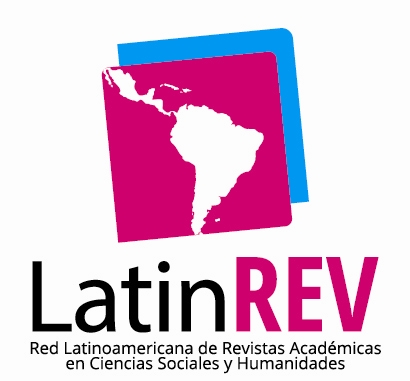Conocimiento de la mujer gestante sobre signos de alarma en el tercer trimestre del embarazo: Una revisión sistemática
Resumen
El conocimiento de los signos de alarma de la mujer gestante en el tercer trimestre del embarazo ayuda la madre a buscar atención medica de manera oportuna, evitando riesgos y previniendo la mortalidad materna. El objetivo de nuestra investigación es analizar la evidencia científica mostrada en los diferentes estudios acerca de esta relación. La búsqueda se hizo en cuatro bases de datos, estas fueron Pubmed Mesh, Scopus, ScienceDirect, Medline, la evaluación metodología se realizó bajo los lineamientos de la declaración PRISMA. Los veinte estudios incluidos en esta revisión revelaron la importancia de conocer los signos de alarma en el embarazo para disminuir la morbimortalidad materna y perinatal. Así como la importancia de la educación en salud.
Descargas
Citas
Say L, Chou D, Gemmill A, Tunçalp Ö, Moller AB, Daniels J, et al. Global causes of maternal death: a WHO systematic analysis. Lancet Glob Health. 1 de junio de 2014;2(6):e323-33.
Trends in maternal mortality 2000 to 2020: estimates by WHO, UNICEF, UNFPA, World Bank Group and UNDESA/Population Division [Internet]. [citado 17 de febrero de 2025]. Disponible en: https://www.who.int/publications/i/item/9789240068759
Complicaciones durante el embarazo [Internet]. [citado 19 de febrero de 2025]. Disponible en: https://espanol.womenshealth.gov/pregnancy/youre-pregnant-now-what/pregnancy-complications
La OMS señala que las embarazadas deben poder tener acceso a una atención adecuada en el momento adecuado [Internet]. [citado 19 de febrero de 2025]. Disponible en: https://www.who.int/es/news/item/07-11-2016-pregnant-women-must-be-able-to-access-the-right-care-at-the-right-time-says-who
Perfiles de países de los ODS [Internet]. [citado 18 de febrero de 2025]. Disponible en: https://unstats.un.org/sdgs/dataportal/countryprofiles/col#goal-3
UNICEF DATA [Internet]. [citado 19 de febrero de 2025]. Data Warehouse. Disponible en: https://data.unicef.org/resources/data_explorer/unicef_f/
Mellizo GAÁ. INSTITUTO NACIONAL DE SALUD.
Petersen CCM, Bilbo REQ, Damsted Rasmussen T, Ekstrøm CT, Villadsen SF. Knowledge About How to Manage Warning Signs of Pregnancy Complications Among Immigrants and Their Descendants Compared to Women of Danish Origin. Matern Child Health J. junio de 2022;26(6):1367-74.
[No title found]. Ginecol Obstet México. 91(9).
Salut B. BiblioguiesUV: Revisiones sistemáticas en Ciencias de la Salud: Pregunta de investigación: modelo PICO [Internet]. [citado 10 de mayo de 2025]. Disponible en: https://uv-es.libguides.com/revisiones_sistematicas_Salud/pregunta_inves/PICO
bmjopen-2016-December-6-12--inline-supplementary-material-2.
Harbour RT, Forsyth L. SIGN 50: a guideline developer’s handbook. Rev. ed. Ediburgh, Scotland: Scottish Intercollegiate Guidelines Network; 2008.
Tamang ST, Dorji T, Yoezer S, Phuntsho T, Dorji P. Knowledge and understanding of obstetric danger signs among pregnant women attending the antenatal clinic at the National Referral Hospital in Thimphu, Bhutan: a cross-sectional study. BMC Pregnancy Childbirth. diciembre de 2021;21(1):104.
Oguntunde O, Nyenwa J, Yusuf F, Dauda DS, Salihu A, Sinai I. Factors associated with the knowledge of obstetric danger signs, and perceptions of the need for obstetric care amongst married young women in northern Nigeria. Afr J Prim Health Care Fam Med [Internet]. 26 de marzo de 2021 [citado 10 de mayo de 2025];13(1). Disponible en: http://www.phcfm.org/index.php/PHCFM/article/view/2557
Emeh AN, Atem AN, Humphrey AA, Gilbert TN, Landis FC. Antenatal care and determinants of obstetric danger signs awareness of immediate postpartum women at Buea Regional Hospital, Cameroon. Pan Afr Med J [Internet]. 2021 [citado 10 de mayo de 2025];38. Disponible en: https://www.panafrican-med-journal.com/content/article/38/247/full
Nkamba DM, Wembodinga G, Bernard P, Ditekemena J, Robert A. Awareness of obstetric danger signs among pregnant women in the Democratic Republic of Congo: evidence from a nationwide cross-sectional study. BMC Womens Health. diciembre de 2021;21(1):82.
Mwilike B, Nalwadda G, Kagawa M, Malima K, Mselle L, Horiuchi S. Knowledge of danger signs during pregnancy and subsequent healthcare seeking actions among women in Urban Tanzania: a cross-sectional study. BMC Pregnancy Childbirth. diciembre de 2018;18(1):4.
Dangura AD. Knowledge about child birth and postpartum obstetric danger signs and associated factors among mothers in Dale district, Southern Ethiopia. BMC Pregnancy Childbirth. diciembre de 2020;20(1):340.
Nigussie AA, Emiru AA, Demilew YM, Mersha EA. Factors associated with knowledge on obstetric danger signs among women who gave birth within 1 year in Bahir Dar city administration, North West, Ethiopia. BMC Res Notes. diciembre de 2019;12(1):177.
Salem A, Lacour O, Scaringella S, Herinianasolo J, Benski AC, Stancanelli G, et al. Cross-sectional survey of knowledge of obstetric danger signs among women in rural Madagascar. BMC Pregnancy Childbirth. diciembre de 2018;18(1):46.
Maseresha N, Woldemichael K, Dube L. Knowledge of obstetric danger signs and associated factors among pregnant women in Erer district, Somali region, Ethiopia. BMC Womens Health. diciembre de 2016;16(1):30.
Bililign N, Mulatu T. Knowledge of obstetric danger signs and associated factors among reproductive age women in Raya Kobo district of Ethiopia: A community based cross-sectional study. BMC Pregnancy Childbirth. diciembre de 2017;17(1):70.
Woldeamanuel GG, Lemma G, Zegeye B. Knowledge of obstetric danger signs and its associated factors among pregnant women in Angolela Tera District, Northern Ethiopia. BMC Res Notes. diciembre de 2019;12(1):606.
Vallely L, Emori R, Gouda H, Phuanukoonnon S, Homer C, Vallely A. Women’s knowledge of maternal danger signs during pregnancy: Findings from a cross-sectional survey in Papua New Guinea. Midwifery. mayo de 2019;72:7-13.
Tjandraprawira KD, Ghozali I. Knowledge of Pregnancy and Its Danger Signs Not Improved by Maternal and Child Health Handbook. J Obstet Gynecol India. junio de 2019;69(3):218-24.
Bogale D, Markos D. Knowledge of obstetric danger signs among child bearing age women in Goba district, Ethiopia: a cross-sectional study. BMC Pregnancy Childbirth. diciembre de 2015;15(1):77.
Mardiyanti I, Nursalam N, Devy SR, Ernawaty E. The independence of pregnant women in early detection of high risk of pregnancy in terms of parity, knowledge and information exposure. J Public Health Afr [Internet]. 30 de octubre de 2019 [citado 10 de mayo de 2025]; Disponible en: https://www.publichealthinafrica.org/index.php/jphia/article/view/1180
Wassihun B, Negese B, Bedada H, Bekele S, Bante A, Yeheyis T, et al. Knowledge of obstetric danger signs and associated factors: a study among mothers in Shashamane town, Oromia region, Ethiopia. Reprod Health. diciembre de 2020;17(1):4.
Belay HG, Limenih MA. Intents of Women on Obstetric Danger Signs and its Associated Factors in Farta Woreda, Ethiopia, 2017. J Health Care Poor Underserved. 2020;31(1):140-52.
Bustamante G, Mantilla B, Cabrera-Barona P, Barragán E, Soria S, Quizhpe E, et al. Awareness of obstetric warning signs in Ecuador: a cross-sectional study. Public Health. julio de 2019;172:52-60.
Derechos de autor 2025 Juan Manuel Medina Molina, Daniel Mauricio Ospina Losada, Laura María Andrade Rivera, Juan Daniel Perdomo Lara, Elizabeth Sophia Perdomo Gaitan

Esta obra está bajo licencia internacional Creative Commons Reconocimiento 4.0.











.png)




















.png)
1.png)


